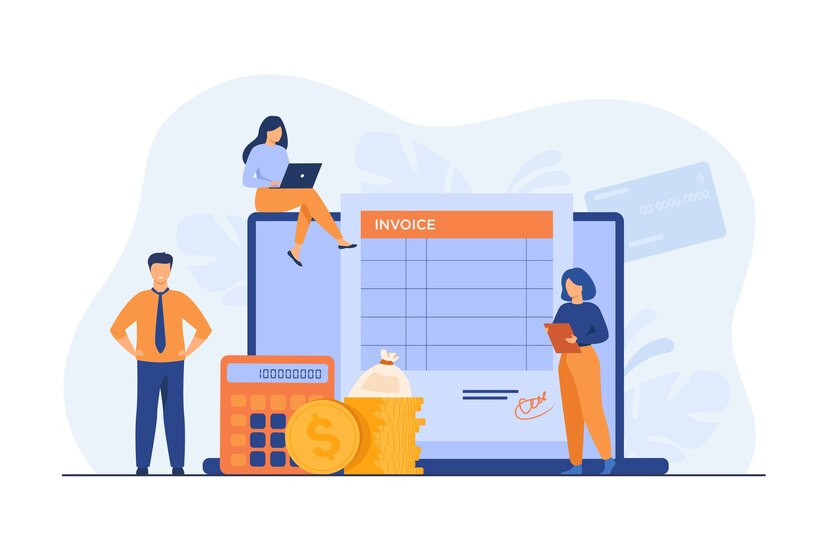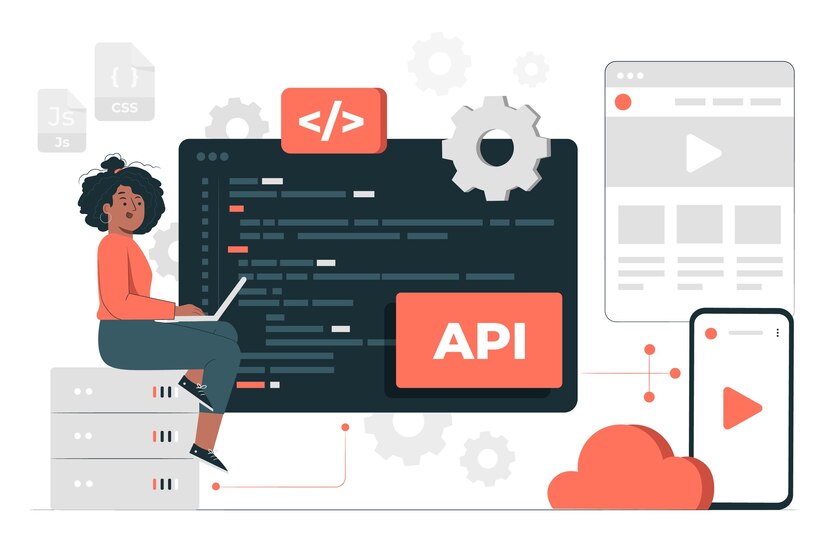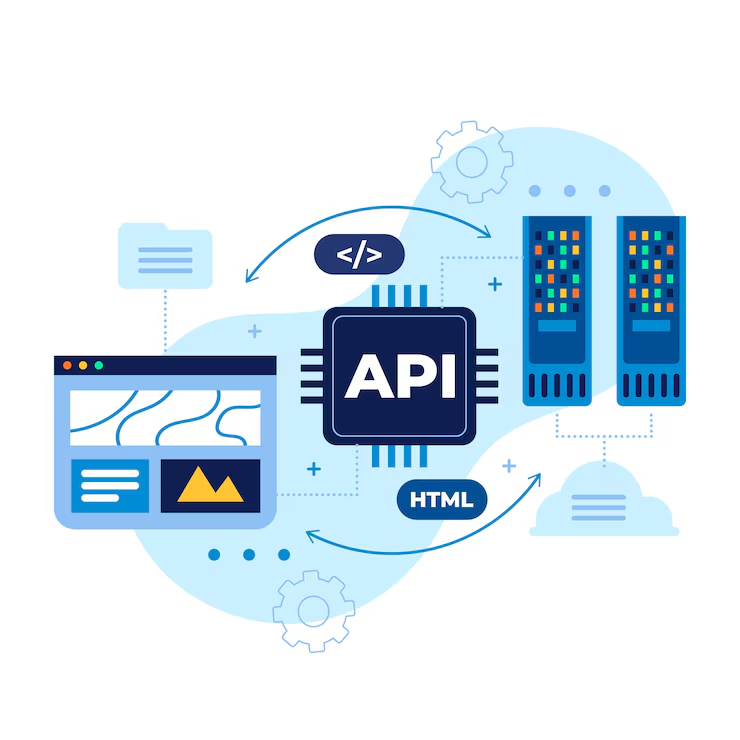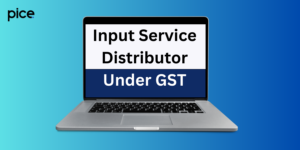Overview of GST E-Invoicing API
- 14 Aug 24
- 19 mins

Overview of GST E-Invoicing API
- Understanding E-Invoicing APIs
- Definition of API and Its Users
- Objectives of Using APIs in GST Framework
- Varieties of Available APIs
- Role of API in E-Invoice Creation
- Requirements to Utilize E-Invoice APIs
- Advantages of Integrating APIs in E-Invoicing Processes
- Functionality and Necessary Steps in API E-Invoicing Sandbox Testing
- Explanation of IP Whitelisting and Setup Process for E-Invoicing
- Procedures to Enroll API for E-Invoices Across Multiple GSTINs Linked to One PAN
- Guidelines for Establishing Numerous Users for a Single PAN
Key Takeaways
- E-Invoicing APIs automate the invoice creation and submission process, significantly reducing manual entry errors and enhancing the accuracy of financial records.
- Real-time data sharing through the E-invoice API portal ensures up-to-date compliance with GST regulations and aids in immediate problem resolution.
- Integrating E-Invoice APIs into business systems helps in improving efficiency by speeding up transaction processing and reducing administrative overhead.
- Using the E-invoice portal allows for better financial management and planning through timely and accurate data access.
- The E-Invoice system supports scalability in business operations, enabling handling of increased transaction volumes without additional resource investment.
Understanding E-Invoicing APIs
E-Invoicing APIs (Application Programming Interfaces) are essential tools designed to automate the process of generating electronic tax invoices in compliance with the Goods and Services Tax (GST) regulations in India. These interfaces facilitate the seamless transfer of invoice data from a company’s financial or billing software directly to the GST portal without manual intervention. This technology plays a crucial role in simplifying the invoicing process, reducing errors, and ensuring faster processing and business compliance with tax laws.
Definition of API and Its Users

An API, or Application Programming Interface, is a set of rules and protocols for building and interacting with software applications. API acts as a bridge that allows different API software systems to communicate with each other. In the context of GST e-invoicing system, the API enables the automatic exchange of invoice information between a business's ERP (Enterprise Resource Planning) system and the central GST system.
E-Invoicing APIs are used by:
- Businesses registered under GST: Any business registered under GST and required to comply with the e-invoicing regulations must use these APIs to automate and streamline their invoicing processes.
- Software Developers and Providers: Developers who create ERP software or business management systems integrate these APIs into their products to ensure they can generate, cancel, and manage invoices as per the GST guidelines.
- Tax Professionals and Consultants: They use these APIs to provide accurate and efficient tax services to their clients by integrating API solutions into their systems for better management of invoice data.
By integrating e-invoicing APIs, users can ensure that their invoicing processes are not only compliant with GST regulations but are also efficient and streamlined, reducing the likelihood of errors associated with manual data entry and increasing the speed at which business can be conducted.
Objectives of Using APIs in GST Framework
The use of Application Programming Interfaces (APIs) within the Goods and Services Tax (GST) framework in India is intended to simplify and streamline the process of business compliance and invoice management for businesses. These APIs facilitate a seamless and automated interaction between a business's financial systems and the centralized GST network. Here’s a detailed look at the various objectives behind employing these APIs:
Automation of Data Transfer
One of the primary aims of utilizing APIs is to automate the data entry process. This automation helps eliminate human errors associated with manual entry, such as typos or duplicated entries, which can lead to discrepancies in financial records and complicate tax filings. By ensuring data is directly transferred from enterprise resource planning (ERP) systems to the GST portal, APIs reduce the likelihood of errors and increase the reliability of the data.
Real-Time Data Sharing

APIs allow for real-time transmission of invoice and other financial data directly to the GST portal. This capability is crucial for maintaining up-to-date records and enables immediate validation of submitted invoices. If there are any issues with the invoice data, they can be identified and rectified promptly, thereby enhancing the efficiency of the business’s financial operations.
Enhanced Compliance with Tax Regulations
By automating the invoicing process and ensuring data accuracy, APIs help businesses comply with GST regulations more effectively. Accurate and timely data submission aids in adhering to tax laws and reduces the risk of penalties associated with non-compliance or inaccurate reporting. This proactive compliance is essential for maintaining good standing in the regulatory environment.
Increased Efficiency and Cost Effectiveness
The integration of APIs into financial systems significantly speeds up the process of invoice generation and submission. This increased efficiency can lead to substantial cost savings in terms of reduced labor hours and less administrative overhead. Additionally, the speed and automation brought by APIs can help businesses manage larger volumes of transactions without proportional increases in resources, thus improving overall productivity.
Scalability of Business Operations
APIs provide a scalable solution for handling business growth. As transaction volumes increase, the API framework can accommodate this growth without a need for additional manual input or significant system upgrades. This scalability ensures that businesses can expand their operations smoothly and manage increased invoicing loads with the same efficiency as before.
Improved Financial Management and Planning
With real-time data and faster processing capabilities, businesses can better manage their finances and plan for the future. APIs help in quicker reconciliation of accounts and provide timely insights into financial statuses, enabling more informed decision-making and better financial planning.
Reduction in Operational Disruptions
Since APIs automate much of the data processing work, the chances of operational disruptions due to manual errors are significantly decreased. This stability is vital for maintaining uninterrupted business operations and can help in building a more reliable and consistent service model.
Enhanced Security
APIs also enhance the security of data transfers by ensuring that all communications between business systems and the GST portal are encrypted and secure. This protection is critical in preventing data breaches and unauthorized access to sensitive information.
In summary, the objectives of using APIs in the GST services are multifaceted, aiming not only at regulatory compliance and efficiency but also at providing a robust infrastructure for secure, accurate, and scalable financial operations. This comprehensive approach helps businesses optimize their processes and align their operations with modern technological standards.
Varieties of Available APIs
The GST system offers a variety of APIs to cater to different needs within the e-invoicing process. Each API type is designed to perform specific functions, providing businesses with a comprehensive toolkit for managing their invoices under the GST regime. Here are the commonly used types:
| Type of API | Function | Purpose and Benefits |
|---|---|---|
| Invoice Generation API | Creates a new invoice in the system. | Automatically sends invoice details from the ERP system to the GST portal to generate and assign an Invoice Reference Number (IRN). |
| Invoice Cancellation API | Cancels an issued invoice if it was made in error. | Essential for maintaining accurate financial records and ensuring compliance with GST regulations. |
| Invoice Retrieval API | Retrieves the details of previously filed invoices. | Useful for audit and reconciliation purposes. |
| E-Way Bill Integration API | Integrates e-way bill generation with invoice creation. | Streamlines the process of goods shipment and GST compliance. |
| GSTR Reporting APIs | Facilitates the automatic preparation and submission of various GST returns. | Ensures timely compliance with tax obligations by automating submission processes. |
This table summarizes the different types of APIs available under the GST framework, highlighting their specific functions and the benefits they offer to businesses, aiding in comprehensive management of invoicing and compliance processes.
Role of API in E-Invoice Creation

APIs play a crucial role in the process of e-invoice creation under the GST framework by automating and simplifying various steps involved. Here’s how APIs function in this context:
Automation of Invoice Submission: APIs automate the process of invoice data submission. This means that data from the business's Enterprise Resource Planning (ERP) system is automatically transferred to the GST portal without manual intervention, thereby reducing errors and saving time.
Real-Time Validation and Processing: Once the invoice data is submitted through the API, it is immediately validated by the GST system. Errors can be detected and corrected in real-time, which facilitates faster processing and issue resolution.
Generation of Invoice Reference Number (IRN): If the invoice data meets all required criteria, an Invoice Reference Number (IRN) is automatically generated by the system. This number is a unique identifier for each invoice and is crucial for tracking and verification purposes.
QR Code Generation: Alongside the IRN, a Quick Response (QR) code is also generated. This QR code contains essential details about the invoice and can be scanned for quick access to information, adding a layer of convenience and further enhancing the verification process.
Overall, APIs are instrumental in streamlining the entire e-invoice creation process, from data submission to the generation of IRN and QR codes, making it efficient and compliant with GST regulations.
Requirements to Utilize E-Invoice APIs
To effectively use e-invoice APIs, businesses must meet certain technical and regulatory requirements. These include:
GST Registration: The foremost requirement is that the business must be registered under GST. Only registered businesses are eligible to use the e-invoicing system and by extension, the APIs.
Compatible ERP Software: The business must have ERP software that is capable of integrating with the GST portal through APIs. This software should be able to generate invoices and other necessary documents in the format required by the GST system.
Internet Connectivity: A stable internet connection is essential because the API needs to communicate frequently with the GST portal for data submission and retrieval.
API Activation and Configuration: Businesses need to activate and configure the API in their ERP system according to the guidelines provided by the GSTN. This may involve setting up various parameters and authentication details to ensure secure data transmission.
Compliance with Data Standards: The data sent through the API must comply with the standards set by the GSTN. This includes correct formatting of invoice details and adherence to data validation rules.
Regular Updates and Maintenance: The API and the ERP system must be regularly updated to comply with any changes in GST regulations or API guidelines. Regular maintenance ensures that the system functions smoothly and remains compatible with the GST portal.
By fulfilling these requirements, businesses can maximize the benefits of using e-invoice APIs, enhancing their compliance with GST regulations and improving overall operational efficiency.
Advantages of Integrating APIs in E-Invoicing Processes
The integration of Application Programming Interfaces (APIs) in e-invoicing processes offers numerous benefits that streamline operations, enhance compliance, and improve overall business efficiency. Here are the key advantages:
Efficiency in Invoice Processing: APIs automate the entire process of invoice creation and submission, significantly reducing the time involved compared to manual processes. This leads to faster transaction processing, allowing businesses to complete financial operations more quickly.
Reduced Errors: Automation minimizes human intervention, which in turn decreases the likelihood of errors that typically occur during data entry. This higher accuracy helps in maintaining cleaner financial records and supports better compliance with tax regulations.

Cost Savings: By streamlining the invoicing process, APIs help reduce administrative overheads. Businesses can allocate fewer resources to invoice management and more towards other critical areas, optimizing operational costs.
Improved Compliance: APIs ensure that all invoicing activities are performed in accordance with the latest GST regulations. Automated systems are updated to comply with changes in legislation, thereby reducing the risk of non-compliance penalties.
Real-Time Data Access: Integrating APIs allows businesses to access and manage invoice data in real-time. This immediate access can aid in better financial planning and decision-making based on the most current data.
Scalability: APIs can handle varying loads of data and transaction volumes with ease, providing businesses with the scalability needed to grow. This capability is crucial for expanding companies that experience increases in invoicing activities.
Functionality and Necessary Steps in API E-Invoicing Sandbox Testing
Before deploying an e-invoicing API in a live environment, it is important to conduct thorough testing in a controlled setting, known as a sandbox environment. Here’s how the sandbox testing works and the steps involved:
Functionality
The sandbox environment replicates the live GST portal but does not actually process transactions. It allows developers and businesses to:
- Test the API’s functionality to ensure it is working as expected.
- Simulate the sending and receiving of data to identify any potential issues in the integration.
- Validate the format and accuracy of the data being transmitted.
Necessary Steps for Testing
- Registration for Access
- Businesses must first register for access to the sandbox environment. This typically involves submitting some basic company details and the technical specifications of the ERP system used.
- Integration Setup
- Configure the API settings in the ERP system to connect with the sandbox environment. This includes setting up endpoints, authentication methods, and other necessary configurations as per GSTN guidelines.
- Simulate Transactions
- Create test invoices and other transactions to simulate how they would be processed in a live environment. This helps in understanding how the data flows through the API and any potential issues that might arise.
- Data Validation
- Check if the data meets the GST requirements and whether the API correctly handles data validation, including error checking and correction mechanisms.
- Performance Analysis
- Assess the performance of the API in terms of response times and reliability. Ensure that the API can handle the expected load and perform efficiently under various conditions.
- Security Testing
- Verify that all data transmissions are secure and that there are no vulnerabilities in the API that could potentially be exploited.
By carefully following these steps in the sandbox testing phase, businesses can ensure that their e-invoicing API integration is robust, secure, and capable of handling real-world invoicing tasks effectively. This preparatory step is crucial for smooth operations and long-term success in utilizing APIs for e-invoicing under the GST framework.
💡If you want to pay your GST with Credit Card, then download Pice Business Payment App. Pice is the one stop app for all paying all your business expenses.
Explanation of IP Whitelisting and Setup Process for E-Invoicing
IP whitelisting is a security measure used to control and restrict access to a network or a specific service to authorized users only. For e-invoicing under the GST framework, IP whitelisting ensures that only requests from pre-approved IP addresses are allowed to access the e-invoicing system. This is crucial for preventing unauthorized access and maintaining the integrity of the invoicing data.
Steps for IP Whitelisting Setup:
Identification of IP Addresses
- The first step involves identifying all the IP addresses from which your business will access the e-invoicing services. This typically includes the IP addresses of the servers where your ERP systems are hosted.
Submission to GSTN
- These IP addresses must be submitted to the GST Network (GSTN) through the official GST portal. The process may require you to log in to your GST account and navigate to the e-invoice section where you can enter or update IP addresses.
Verification and Approval
- After submission, the GSTN will verify the IP addresses. Once verified and approved, these addresses are whitelisted, meaning that any requests for e-invoicing made from these IPs will be allowed while others will be denied.
Testing
- Post-approval, it is advisable to test accessing the e-invoicing API from the whitelisted IP addresses to ensure that connectivity is not an issue and that all configurations are correctly set up.
This process enhances the security of the e-invoicing system by ensuring that only authorized personnel can generate, view, or modify invoice data.
Procedures to Enroll API for E-Invoices Across Multiple GSTINs Linked to One PAN
Enrolling an API for e-invoices when there are multiple GST Identification Numbers (GSTINs) under a single Permanent Account Number (PAN) involves a centralized approach. This allows all linked GSTINs to use the same API setup for e-invoicing, ensuring consistency and efficiency in the invoicing process across different units or locations of a business.
Steps for API Enrollment:
Central Registration
- The company must register the API under the primary PAN in the GST portal. This is usually done through the API management section where details about the API, such as endpoints and other configurations, are provided.
Linking GSTINs
- Once the API is registered, the next step is to link all the GSTINs under the PAN to this API configuration. This might involve specifying which GSTINs are allowed to use this API in the settings.
Configuration and Testing
- Configure the API in the ERP systems used by different units or locations under the GSTINs. It is crucial to ensure that the API is configured similarly across all systems to avoid discrepancies in data processing.
Security Setup
- Implement necessary security measures such as IP whitelisting for each location that will use the API. This is essential to maintain the security integrity of the e-invoicing process across different sites.
Pilot Testing
- Conduct pilot tests by generating invoices from different GSTINs to ensure that the API works uniformly across all linked numbers. Address any issues found during these tests.
Go Live
- After successful testing and configuration, the API can go live. This means it can now be used for e-invoicing by all linked GSTINs under the single PAN.
This centralized approach not only simplifies management and oversight of e-invoicing across multiple locations but also ensures that data consistency and compliance with GST regulations are maintained.
Guidelines for Establishing Numerous Users for a Single PAN
When managing multiple users under a single Permanent Account Number (PAN) in the GST system, it's crucial to ensure that each user has the appropriate access and capabilities to perform their duties without compromising the security or integrity of the financial data. Here are some structured guidelines to help you effectively set up and manage multiple users for a single PAN:
User Role Definition
- Identify Different Roles: Start by defining the various roles required within your organization for handling GST-related tasks. Common roles include administrators, data entry clerks, accountants, and compliance officers.
- Assign Specific Permissions: Each role should have specific permissions that restrict or allow access to certain functionalities in the GST system. For example, administrators might have full access, while data entry clerks only have permission to view and enter data but not to submit or approve filings.
User Registration Process
- Individual Registration: Each user must be registered individually under the organization’s PAN with a unique login ID. This helps in tracking the activities of each user separately.
- Documentation and Verification: Collect necessary documents from each user for verification purposes before finalizing their registration. This step is crucial for security and compliance with regulatory requirements.
Access Control Settings
- Implement Robust Authentication Mechanisms: Use strong authentication methods such as two-factor authentication (2FA) to ensure that only authorized users can access the system.
- Regularly Update Access Rights: Regular reviews and updates of user access rights are necessary to accommodate changes in roles or employment status, ensuring that only current employees have access to the system.
Training and Compliance
- Provide Adequate Training: All users should receive comprehensive training on the use of the GST system, focusing on the areas relevant to their roles. This includes training on data security and compliance standards to prevent accidental or malicious breaches.
- Monitor Compliance: Regularly monitor user activities within the system to ensure compliance with internal policies and GST regulations. This might involve periodic audits of user actions and transaction logs.
Data Security Measures
- Use Data Encryption: Encrypt sensitive data within the system to protect it from unauthorized access or leaks. This includes personal user information and financial transactions.
- Regular Security Assessments: Conduct regular security assessments to identify and mitigate potential vulnerabilities within the system that could be exploited by internal users or external threats.
Contingency Planning
- Develop User-Related Contingencies: Establish protocols for dealing with situations where a user’s access might need to be revoked or temporarily suspended, such as in cases of suspected fraud or when a user leaves the organization.
- Backup and Recovery Procedures: Ensure that there are robust backup and recovery procedures in place to recover user data in case of data loss or corruption.
By following these guidelines, businesses can maintain a secure and efficient environment for managing multiple users under a single PAN. This structured approach helps in minimizing risks and ensuring that all users can perform their roles effectively while complying with GST requirements.
 By
By 

















